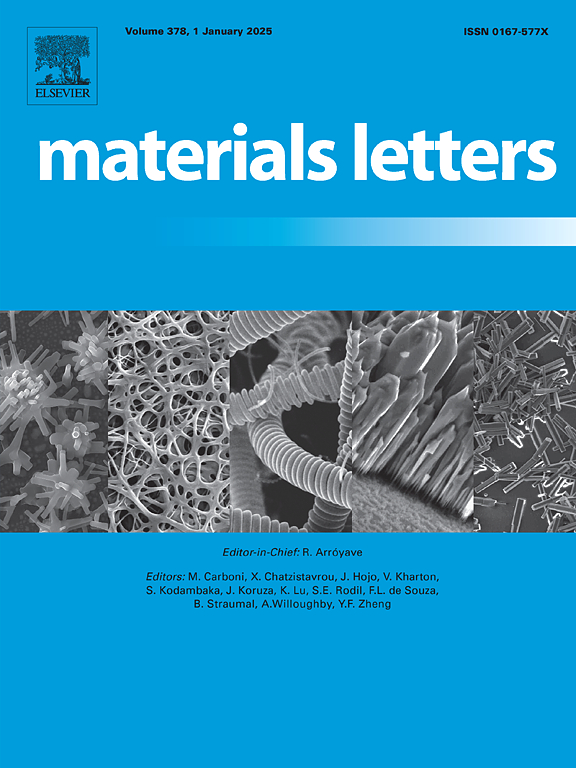Tuning the electrical and optical properties of topological insulator Bi2Se3 by Ar+ ion irradiation
IF 2.7
4区 材料科学
Q3 MATERIALS SCIENCE, MULTIDISCIPLINARY
引用次数: 0
Abstract
We employed X-ray diffraction analysis, electron transport measurements, and optical ellipsometry to investigate the topological insulator Bi2Se3 before and after argon ion irradiation with an energy of 15 keV and a fluence of 5⋅1015 cm−2. The electrical resistivity in the temperature range of 2–300 K and optical properties in the spectral range of 1250–40000 cm−1 at room temperature were measured. After irradiation, the rocking curve exhibited five local maxima, suggesting the crystal had fragmented into five mosaic blocks. The temperature-dependent electrical resistivity was modeled using a phenomenological approach accounting for electron–phonon and electron–electron scattering mechanisms. Irradiation led to enhancements in both scattering processes and an increase in electrical resistivity. Notable alterations were observed in the optical properties after irradiation: a more than twofold decrease in maximum optical conductivity, emergence of additional features in the infrared region of the imaginary part of dielectric permittivity, and reduction in reflectivity magnitude across the entire spectral range. We assume that such changes are associated with a change in the electronic structure of the irradiated layer.
求助全文
约1分钟内获得全文
求助全文
来源期刊

Materials Letters
工程技术-材料科学:综合
CiteScore
5.60
自引率
3.30%
发文量
1948
审稿时长
50 days
期刊介绍:
Materials Letters has an open access mirror journal Materials Letters: X, sharing the same aims and scope, editorial team, submission system and rigorous peer review.
Materials Letters is dedicated to publishing novel, cutting edge reports of broad interest to the materials community. The journal provides a forum for materials scientists and engineers, physicists, and chemists to rapidly communicate on the most important topics in the field of materials.
Contributions include, but are not limited to, a variety of topics such as:
• Materials - Metals and alloys, amorphous solids, ceramics, composites, polymers, semiconductors
• Applications - Structural, opto-electronic, magnetic, medical, MEMS, sensors, smart
• Characterization - Analytical, microscopy, scanning probes, nanoscopic, optical, electrical, magnetic, acoustic, spectroscopic, diffraction
• Novel Materials - Micro and nanostructures (nanowires, nanotubes, nanoparticles), nanocomposites, thin films, superlattices, quantum dots.
• Processing - Crystal growth, thin film processing, sol-gel processing, mechanical processing, assembly, nanocrystalline processing.
• Properties - Mechanical, magnetic, optical, electrical, ferroelectric, thermal, interfacial, transport, thermodynamic
• Synthesis - Quenching, solid state, solidification, solution synthesis, vapor deposition, high pressure, explosive
 求助内容:
求助内容: 应助结果提醒方式:
应助结果提醒方式:


